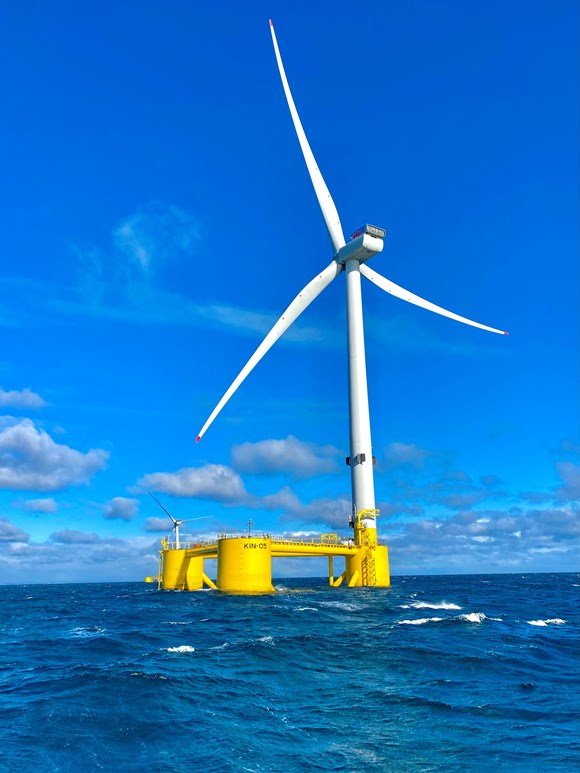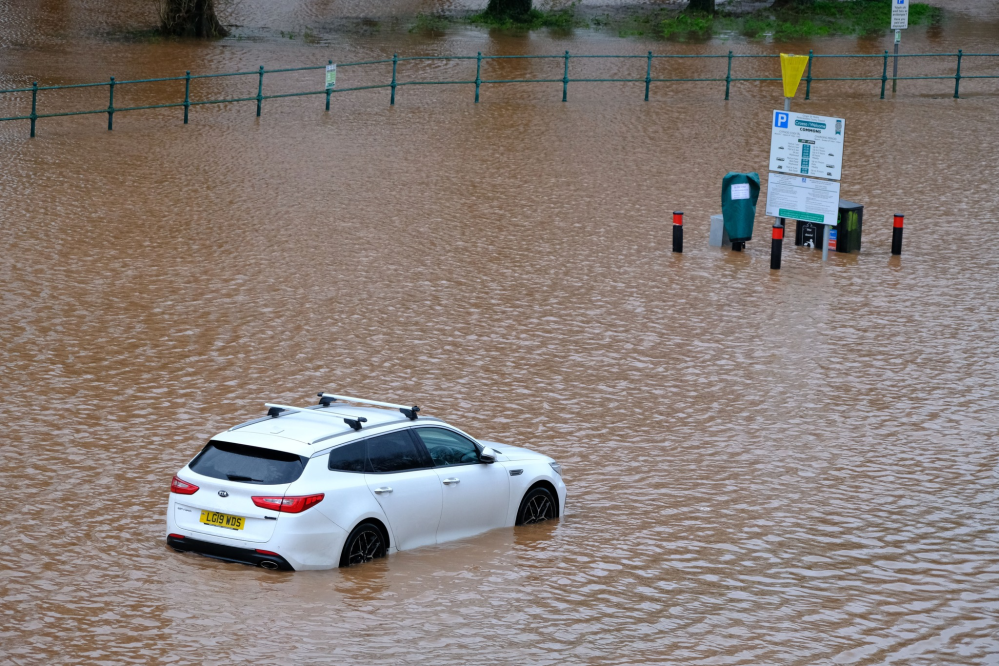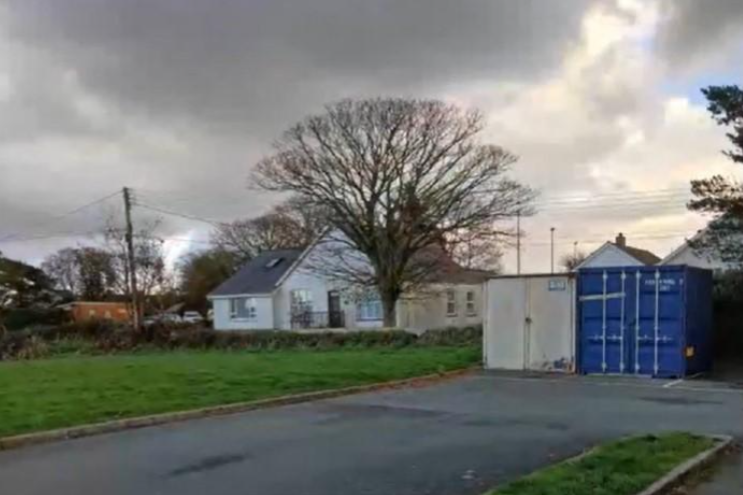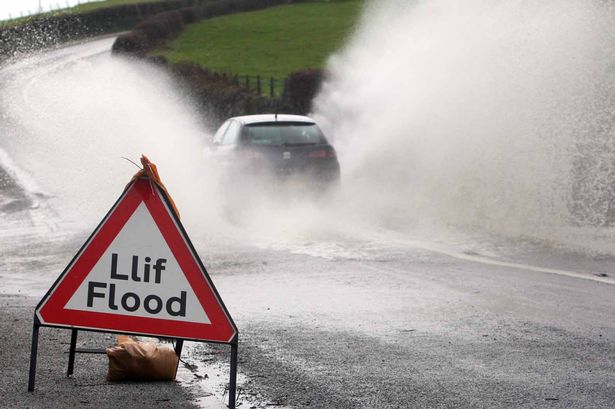Climate
Marine Delivery Routemap set to shape future of offshore wind locally

THE CROWN ESTATE has this week (Sept 11) published its Marine Delivery Routemap, outlining a comprehensive vision for the UK’s seabed, including key areas such as South Wales. The plan aims to support the growth of vital sectors like offshore wind while enhancing biodiversity and addressing the increasing demands placed on the seabed.
As the UK races towards a green energy future, this long-term strategy seeks to unlock the potential of marine resources to accelerate clean energy projects and drive economic growth in coastal regions. The focus is on balancing energy needs with environmental preservation, particularly in biodiversity restoration, a pressing issue as UK marine habitats face increasing strain.
Supporting growth in Wales
With a clear focus on supporting economic development, the Routemap aims to provide much-needed certainty to developers and investors, offering a stable framework for future seabed developments. South Wales is highlighted as a key region for offshore wind projects, especially within the Celtic Sea. The strategy seeks to foster partnerships between industries and local communities to ensure benefits flow onshore through job creation, infrastructure improvements, and investment in ports and supply chains.
In addition, The Crown Estate will work with various stakeholders, including local authorities and environmental agencies, to ensure the long-term sustainability of the marine environment. The Routemap aims to identify new areas for nature restoration and boost the region’s role in helping the UK meet its net zero goals.
A leading role in offshore wind
The UK is already a world leader in offshore wind, and The Crown Estate is building on this foundation. Its partnership with Great British Energy, announced recently, aims to bring 20-30 gigawatts (GW) of additional offshore wind power to market by 2030—enough to power almost 20 million homes. Much of this new capacity is expected to come from the Celtic Sea, benefiting South Wales and South West England.
With a mix of fixed and floating wind farm foundations under consideration, the new offshore wind projects promise to cement the region’s status as a renewable energy powerhouse, creating new skilled jobs and attracting significant investment. The report also proposes measures to de-risk these projects for developers, ensuring faster deployment of wind farms.
Balancing energy and environment
The demand for marine space is growing, particularly as the UK expands its offshore renewable energy capacity. However, this must be balanced with the protection of marine ecosystems. The Crown Estate’s Marine Delivery Routemap places a strong emphasis on biodiversity and nature recovery. This includes identifying new areas for conservation and developing strategies to restore marine habitats that have suffered due to human activity.
Ed Miliband, the UK’s Energy Secretary, praised the Routemap, saying: “The sustainability of our seabed is critical to securing the UK’s energy independence alongside protecting the environment. The ambitious plans set out by The Crown Estate will help deliver homegrown energy and create jobs while ensuring the protection of our marine environment.”
Next steps for the Marine Delivery Routemap
The Crown Estate will continue to work with partners and stakeholders to refine the Marine Delivery Routemap. A series of sector-specific updates, starting with offshore wind, are expected to follow. These will outline further developments in nature recovery, carbon capture, and other marine sectors.
South Wales and the UK’s broader marine sectors now look set to play a key role in not only delivering the energy transition but also restoring and protecting the marine environment for future generations
Climate
Urgent calls for action on Pembroke Commons flooding

TWO PEMBROKESHIRE councillors have submitted an urgent call for action following recent heavy flooding in parts of Pembroke.
Pembroke councillors Aaron Carey and Jonathan Grimes have submitted an urgent notice of motion ahead of tomorrow’s December 12 meeting of Pembrokeshire County Council following heavy flooding in the town’s Commons and Castle Pond area.
The notice of motion covers six points.
“That this council notes with concern the repeated and increasingly severe flooding experienced in our coastal, estuarial and river-fringe communities over recent weeks — in particular the flooding events affecting the Commons/Castle Pond area.
“That the council further notes that, according to correspondence from the Coastal, Rivers & Drainage Team Manager, the tipping gate at the barrage remains out of operation until mid-January due to mechanical issues; meanwhile high tide, heavy rain, wind-driven tidal surges and overspill at the sluice have combined to overwhelm the drainage/outfall infrastructure.
“That we recognise the current maintenance schedule (delayed till after the summer season) and the justification given — but further that such planning failed to foresee the likelihood of severe winter storm and surge events, which climate change makes more frequent and more intense.
“That this council therefore calls on the Cabinet to commission an urgent review of:
- The adequacy of the current drainage/outfall and tidal-sluice infrastructure (barrage tipping gate, sluice/sluice-valve, flap valve, outfall capacity) for current and projected climate/tide conditions.
- The maintenance scheduling policy for coastal and estuarial flood-risk assets, with a view to ensuring critical maintenance is completed before winter high-tide / storm-surge season, rather than — as at present — being delayed until after summer for ‘recreational / biodiversity’ reasons.
“That, pending the outcome of the review, the council should allocate appropriate emergency capital funding to remediate the barrages / sluices / outfalls at risk of failure or blockage — to safeguard residents, properties, highways and public amenities from further flooding.
“That, further, this council resolves to publish a public flood-resilience plan for the county, identifying all coastal and river-fringe ‘hotspots,’ maintenance schedules, responsible teams, and a transparent timeline for upgrades or remedial works — so residents have clarity and confidence in flood prevention measures.”
The submission also includes a question for Cabinet Member Cllr Rhys Sinnett.
“In light of the repeated flooding events across the county – including the recent overflow at Castle Pond and the acknowledgement by your own Coastal, Rivers & Drainage Team that the barrage tipping gate remains inoperable until mid-January can you explain what assessment has been made of the adequacy of our tidal outfall infrastructure in the face of current and projected future storm surges and sea-level rise?
“If no such assessment has yet been undertaken, will you commit now to commissioning an immediate structural and risk-capacity audit, with a report to full council within three months, and with proposals for funding any remedial works required — to avoid recurring damage and disruption to residents, highways, and public amenities?”
A Pembrokeshire County Council spokesman has confirmed the 11th hour call will be heard by full council tomorrow.
Image: Martin Cavaney
Climate
UK marks 25 years since first offshore wind farm began generating power

Sector now powers millions of homes and supports 40,000 jobs
THE UK today (Dec 8) marks a significant milestone: 25 years since the country’s first offshore wind farm began generating electricity. Blyth Offshore Wind Farm, built off the Northumberland coast in 2000, consisted of just two turbines producing four megawatts of power — enough for three thousand homes — and laid the foundations for what has become one of the UK’s most important energy industries.
In the space of a single generation, offshore wind has grown into the UK’s largest source of clean electricity. In 2024 it provided more than thirty-four per cent of all renewable power and generated a record seventeen per cent of the UK’s electricity overall, totalling 48.5 terawatt hours. The current fleet has a combined capacity equivalent to five large nuclear power stations.
Across UK waters, 2,878 turbines are now in operation — ten floating and 2,868 fixed — with a total generating capacity of 16.1 gigawatts. That is enough to power more than sixteen million homes each year. Industry estimates suggest that, without this development, the UK would have had to burn an additional twenty million tonnes of gas over the past twenty-five years, producing more than sixty million tonnes of CO₂.
The sector’s growth has also reshaped the economy. Nearly two thousand companies now operate within the UK wind supply chain, including one hundred and sixty factories. Their combined activity is forecast to contribute £18.2bn to the UK economy over the next decade. Around forty thousand jobs are currently supported by offshore wind — a figure projected to rise to ninety-four thousand by 2030.
Construction is accelerating. More than 7.5GW of new offshore wind is already being built and is due to become fully operational within the next two years, with a further 22GW consented through to 2033.
‘Britain is once again leading the world in clean power’
Energy Minister Michael Shanks MP said: “Twenty-five years after the first offshore wind turbines began to turn, Britain is once again leading the world in clean homegrown power. Offshore wind is at the heart of our 2030 mission – helping us reduce our dependence on volatile fossil fuel markets, lower bills for good, and support one hundred thousand jobs by 2030.”
RenewableUK’s Deputy Chief Executive Jane Cooper said the sector’s progress had brought “jobs, investment, energy security, and environmental benefits in equal measure,” adding that next month’s clean power auction could secure a record amount of new offshore capacity. “A consistent pipeline of projects is vital to trigger new investment in factories and supply chain companies,” she said.
Julia Rose, Head of Offshore Wind at The Crown Estate, said the UK’s first 25 years demonstrated “the transformative power of collaboration and strategic vision,” noting that 45 operational wind farms are now in UK waters with a 95GW development pipeline. The Crown Estate plans to bring a further 20–30GW of new leasing opportunities to market by 2030.
Ed Daniels, CEO of Venterra Group, highlighted the role of the UK’s supply chain: “Offshore wind’s success has created tens of thousands of skilled jobs, rejuvenated coastal communities and established the UK as a global exporter of expertise. Continued investment is essential to deliver economic growth and energy security over the next twenty-five years.”
Climate
Fishguard ‘battery box’ scheme near school refused

PLANNERS have refused a Pembrokeshire ‘battery box’ electricity storage unit near a Pembrokeshire town school, which has seen local objections including fears of a potential risk to nearby school children.
In an application recommended for approval at the December meeting of Pembrokeshire County Council’s planning committee, AMP Clean Energy sought permission for a micro energy storage project on land at Fishguard Leisure Centre Car Park, near Ysgol Bro Gwaun.
The application had previously been recommended for approval at the November meeting, but a decision was deferred pending a site visit.
The scheme is one of a number of similar applications by AMP, either registered or approved under delegated planning powers by officers.
The battery boxes import electricity from the local electricity network when demand for electricity is low or when there are high levels of renewable energy available, exporting it back during periods of high demand to help address grid reliability issues; each giving the potential to power 200 homes for four hours.
The Fishguard scheme, which has seen objections from the town council and members of the public, was before committee at the request of the local member, Cllr Pat Davies.
Fishguard and Goodwick Town Council objected to the proposal on grounds including visual impact, and the location being near the school.
An officer report said the scheme would be well screened by a Paladin Fence, with a need to be sited close to an existing substation.
Speaking at the December meeting, Ben Wallace of AMP Clean Energy conceded the boxes were “not things of beauty” before addressing previously raised concerns of any potential fire risk, saying that “in the incredibly unlikely” event of a fire, the system would contain it for up to two hours, giving “plenty of time” for it to be extinguished, an alarm immediately sounding, with the fire service raising no concerns.
“These are fundamentally safe, the technology is not new,” he said, comparing them to such batteries in phones and laptops.
One of the three objectors at the meeting raised concerns of the proximity to homes and the school, describing it as “an unsafe, unsustainable and unnecessary location,” with Cllr Jim Morgan of Fishguard Town Council, who had previously raised concerns of the “nightmare scenario” of a fire as children were leaving the school, also voicing similar issues.
Local county councillor Pat Davies, who had spoken at the previous meeting stressing she was not against the technology, just the location and the potential risk to pupils, said the siting would be “a visual intrusion,” with the school having many concerns about the scheme, adding it had been “brought forward without any dialogue of consultation with the school”.
Cllr Davies added: “It is unacceptable that a micro-storage unit should be proposed in this area; someone somewhere has got it wrong.”
Following a lengthy debate, committee chair Cllr Mark Carter proposed going against officers in refusing the scheme; members unanimously refusing the application.
-

 News3 days ago
News3 days agoDyfed-Powys Police launch major investigation after triple fatal crash
-

 Crime7 hours ago
Crime7 hours agoMilford Haven man jailed after drunken attack on partner and police officers
-

 Crime2 days ago
Crime2 days agoMan sent to Crown Court over historic indecent assault allegations
-

 Crime1 day ago
Crime1 day agoMan charged with months of coercive control and assaults
-

 Crime4 days ago
Crime4 days agoMan spared jail after baseball bat incident in Milford Haven
-

 Crime2 days ago
Crime2 days agoMilford Haven man admits multiple offences after A477 incident
-

 Education6 days ago
Education6 days agoTeaching assistant struck off after asking pupil for photos of her body
-

 Crime1 day ago
Crime1 day agoWoman ‘terrified in own home’ after ex breaches court order






















